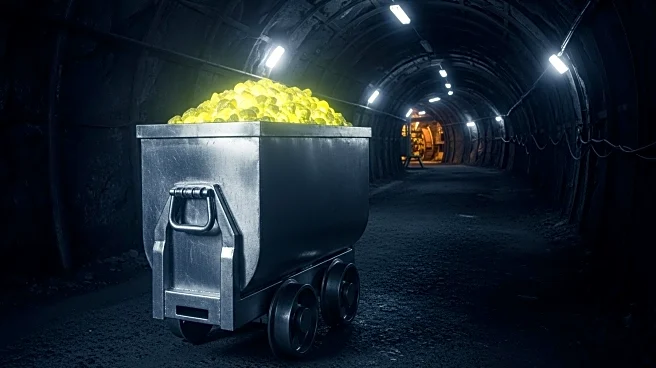What's Happening?
Two major uranium producers, Cameco and Kazatomprom, have announced reductions in their production targets, raising concerns about a tightening supply in the uranium market. Cameco, a Canadian company, cited development setbacks and labor constraints at its McArthur River mine, leading to a reduction in its 2025 production target from 18 million pounds to 14-15 million pounds. Meanwhile, Kazatomprom, Kazakhstan's state-owned mining company, plans a voluntary 10% cut in its 2026 production due to declining profits and market conditions. This decision will reduce its output from 32,777 metric tons to 29,697 metric tons, equivalent to 5% of global supply. These cuts are expected to strain the supply-demand balance further, potentially driving up uranium prices.
Why It's Important?
The reduction in uranium production comes at a time when demand is increasing due to the construction of 70 nuclear power plants worldwide and the growing electricity needs of the artificial intelligence industry. The World Nuclear Association reports that current mine supply meets only 90% of uranium demand, with the remaining 10% relying on secondary supply, which is declining. This situation is predicted to lead to a structural supply deficit of approximately 20 million pounds by 2025, potentially expanding to 130 million pounds by 2040. The tightening supply could result in higher uranium prices, impacting industries reliant on nuclear energy and potentially reshaping the nuclear energy supply chain.
What's Next?
As uranium producers shift their strategies from volume growth to value management, they are likely to focus on maintaining profitability and resource reserves. Kazatomprom plans to increase exploration investments to replenish resources, while Cameco aims to leverage its asset portfolio and risk management capabilities to fulfill contractual obligations. Investors may see uranium as a long-term investment theme, given the persistent supply gap and the energy transition driving demand. The production decisions of these industry leaders will influence short-term uranium prices and may reshape supply dynamics in the nuclear energy sector.
Beyond the Headlines
The strategic shift by uranium producers from expansion to value management reflects broader industry trends towards sustainability and capital discipline. This approach may lead to more stable pricing and supply conditions in the long term, benefiting both producers and consumers. Additionally, the focus on exploration and resource replenishment highlights the importance of sustainable practices in the mining industry, which could have positive environmental and economic implications.












